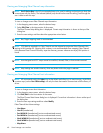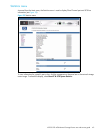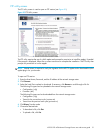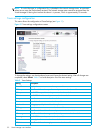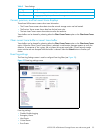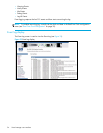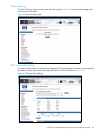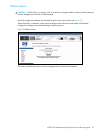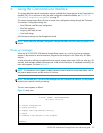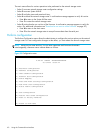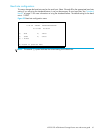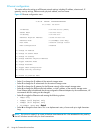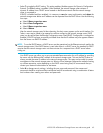56 Visual manager user interface
While the network storage router’s current, previous, and last assert trace data does provide a complete
summary of events in a chronological fashion, SCSI Command Tracking adds the ability to filter the trace
data to show only the information related to the processing of specific SCSI commands.
• SCSI Command Tracking can be toggled to ON or OFF. When toggled ON and submitted, all SCSI
commands received or transmitted to or from the network storage router are then logged in the
SCSI Commands section shown on this screen. When set to OFF (and submitted), no SCSI commands
are logged.
• Previous entries for SCSI Command Tracking can also be cleared. Toggling the clear option to the ON
position and selecting the Submit button clears all previous entries.
• The settings for the Host/Device ID Table are used to filter the trace data such that a sub-set of the total
logged information is displayed under the SCSI Commands section. Logged data can be defined
according to the Protocol (FC, Other, or ALL), Type (Device, Host, or ALL), and Value (ID or ALL). For the
ID, this can be a specific FC LUN or Switch ID (S_ID) or some other specific value. Selecting the Submit
button activates the settings for Protocol, Type, and Value.
Report menu
Accessed from the Main menu, when Report is selected, a second window pops up and displays a
consolidated view of the following:
• Platform
• BIOS Initialization
• Bootup Initialization
• Serial
• Ethernet
• FC Port 0
• SFP Transceiver in FC Port 0
• SCSI Bus 0
• SCSI Bus 1
• Discovery Information
• Device Entries
• Mapping Information
• Active Initiators
• Trace Settings
• Current Traces
• Previous Traces
• Assert Traces
• Event Log Settings
• Event Log



